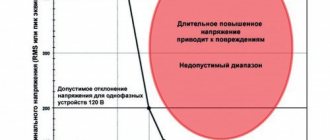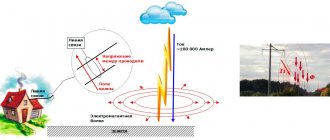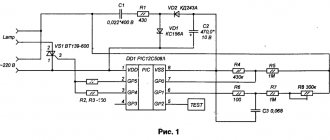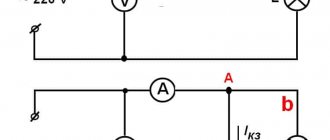Voltage sags can cause serious problems, such as disruption of production processes and loss of quality. Such failures occur much more often than interruptions. The economic consequences of voltage sags are often greatly underestimated. But what exactly is a voltage dip? How does voltage dip occur? Is it possible to prevent voltage sags or should we try to limit the possible damage through early detection? This article covers these issues in detail.
Voltage sags
Voltage sags can cause serious problems, such as disruption of production processes and loss of quality. Such failures occur much more often than interruptions. The economic consequences of voltage sags are often greatly underestimated. But what exactly is a voltage dip? How does voltage dip occur? Is it possible to prevent voltage sags or should we try to limit the possible damage through early detection? This article covers these issues in detail.
Residual stresses during welding
During the welding process of a structure, as the metal cools, stresses arise in it caused by unequal heating of the base and deposited metals, shrinkage of the metal after welding, structural changes in the metal due to heating and rapid cooling, and changes in the solubility of gases in the weld as it cools. Internal stresses contribute to both deformation and destruction of the welded product. To eliminate residual stress, constructive and technological measures are taken.
Constructive measures:
- The base metal is a metal that does not form hardening structures when cooled in air. The metal of the electrodes must have plastic properties that are not lower than the plastic properties of the base metal.
- During the welding process, concentration of seams and their intersection should not be allowed.
- When welding, welds in the form of closed contours should be avoided. This increases the in-plane tension.
- Welding gussets and overlays that lead to an increase in plane stresses should be avoided.
- When welding, preference must be given to butt welds that are less rigid. The concentration of force stresses in them is much less than in fillet welds.
- In the process of designing welded structures, it is necessary to provide for the possibility of manufacturing individual welded assemblies, which could then be connected into a common structure. This generally reduces the in-plane stress.
Technological activities:
- Preliminary and accompanying heating of products during the cooking process;
- After welding, the hot metal is forged;
- Tempering after welding reduces residual stresses by 85-90%;
- Rolling rolling of welds.
What is a voltage dip?
According to the European standard EN 50160, a voltage dip is defined as a sudden decrease in effective voltage values to a value between 90% and 1% of the set value, followed by immediate voltage recovery. The duration of the voltage dip ranges from half a period (10 ms) to a minute.
Rice. 1 Example of voltage dip
If the effective voltage value does not fall below 90% of the set value, it is considered normal operating condition. If the voltage drops below 1% of the set value, it is considered an interruption.
Therefore, a voltage dip should not be confused with an interruption. The interruption occurs, for example, after a fuse has tripped (typically 300 ms). A power outage in the network propagates in the form of a voltage dip throughout the rest of the electrical distribution network.
The figure (Fig. 2) clarifies the difference between a sag, a short interruption, and a low voltage.
Rice. 2: Difference between sag, interruption and undervoltage
How does it work
All objects contain electrical charges: anions, cations, electrons. Their number affects the value of the negative or positive potential. The difference between these values is the voltage, after which the movement of charges appears (electrical current). This property was used in the development of devices for searching potential:
- a resistance is placed in the path of the particles, which reduces their concentration to a minimum (safe for people);
- residual electricity is converted into light, sound or magnetic energy;
- the intensity of the received signal indicates the absence or presence of potential.
You might be interested in Features of an AC ammeter
The device is connected to the network using contacts or terminals and the presence or absence of electric current is determined. When voltage exists, this is indicated by the sound of a microspeaker, a meter needle, or an LED light bulb.
Carrying out measuring work
How does voltage dip occur?
1. Turn-on currents
One known cause of small voltage dips is switching currents from capacitors, motors, or other devices. In the following figure you can see that when the engine starts, the current increases for a short time. The voltage drop across impedances Z and Z1 results in a slight voltage dip across the low voltage distributor (dip zone 1) and a slightly larger voltage dip behind impedance Z1 (dip zone 2).
Rice. 3 “Starting” motors can lead to voltage failure
The solution to problems caused by such failures is to optimize the installation. Turning on devices should not lead to critical voltage dips.
2. Short circuits in the low voltage network
When there is a short circuit in the low voltage network, short circuit current flows. The contribution of the short circuit current depends on the value of the impedances Z and Z3. In practice, the impedance of Z3 is greater. The size of the impedance Z3 is determined in part by the type and length of the cable. The longer the cable, the lower the short circuit current will be.
The short circuit current causes a voltage drop across the impedance Z, and a short-term voltage dip is observed at the main low voltage distributor (dip zone 1).
In the event of a short circuit, the fuse of group 3 should trip. If 100 ms elapse before the fuse trips, then a strong voltage dip of 100 ms is observed throughout the entire installation.
Rice. 4 Typical example of an operating condition in which a voltage dip occurs as a result of a short circuit in the low voltage network
Although short circuits occur in low voltage networks, they are often ignored in practice. Short circuits in medium voltage networks are more critical.
3. Short circuits in the medium voltage network
Most often, voltage dips are observed in medium voltage networks. They can be caused, in particular, by the following factors:
- earthworks,
- breakdown of the coupling,
- cable aging,
- short circuit in air networks (storms, animals, etc.)
The following figure (Figure 5) shows a typical medium voltage network structure. Known transformer boxes/local distribution substations (green dots) are connected to each other in a ring and connected to the distribution station (blue dots). There is always a gap in the ring (see the ring of green dots at the bottom right). When a short circuit occurs, short circuit current (red line) flows through the circuit. It leaks until the fuse at the distribution station turns off the ring. This is shown in the left picture (in the ring at the top left).
Thus, during a short circuit, a high current flows briefly. Due to the network impedances, this leads to a short-term voltage drop in the entire network. This short-term decrease in voltage is expressed in the form of a "voltage dip".
Rice. 5 Most voltage sags are caused by short circuits in the medium voltage network
About 75% of voltage sags occur in the medium voltage network. They are often unavoidable for the consumer.
Short circuits in high voltage networks
Short circuits in high voltage networks are often caused by thunderstorms or (faulty) switching on. The latter are usually observed at the ends of high voltage lines.
Classification
Residual stresses, depending on their sizes, are divided into:
- Residual stresses of the 1st kind in sizes comparable to the size of the entire body;
- Residual stress of the 2nd kind or microscopic, in sizes comparable to the size of metal grains. Microscopic stresses are studied by radiographic methods;
- Residual stress of the 2nd kind or submicroscopic distortions, in dimensions comparable to the dimensions of the atomic crystal lattice.
Harmful residual stresses (usually tensile) lead to the destruction of the product, the appearance of cracks in it, and accelerated corrosion formation. Useful stresses, often compressing, increase the elasticity of the product, endurance, and increase corrosion resistance.
Voltage sags problems
Voltage sags can cause failure of computer systems, PLC systems, relays and frequency converters. In critical processes, just one voltage dip can cause high costs, especially continuous processes.
Examples of this include injection molding, extrusion processes, printing or processing of food products such as milk, beer or soft drinks.
The costs associated with a voltage dip consist of:
- lost profits as a result of idle production facilities,
- costs for restarting the production process,
- costs associated with delays in product deliveries,
- costs for spoiled raw materials,
- costs for eliminating damage caused to machines, devices and matrices,
- maintenance and labor costs.
The average cost of a voltage sag varies greatly by industry:
- fine chemistry 190,000 euros
- microprocessors 100,000 euros
- metalworking 35,000 euros
- textile industry 20,000 euros
- food industry 18,000 euros
Often processes take place without the presence of people, so voltage dips are not immediately detected. In this case, for example, the injection molding machine can stop unnoticed. By the time the shutdown is discovered, significant damage has already been done.
Customers will receive products too late and the plastic in the machine will harden. In printing houses or in the paper industry, paper can rip, which can even lead to a fire. Another well-known example is the damage caused to the tire manufacturer Vredestein as a result of voltage sags. www.rtvoost.nl
Consequences of failure
Deviations that affect the quality of electricity negatively affect the operation of electrical equipment. Specifically, voltage dips lead to the following consequences:
- the intensity of the luminous flux in incandescent lamps decreases;
- the sensitivity of radio and television equipment decreases;
- X-ray units operate intermittently;
- false alarms occur in electronic systems;
- the operation of city electric transport is disrupted;
- The power of electric motors decreases (plus they wear out faster).
In production conditions, due to a voltage dip, electrical equipment may turn off, which will lead to disruption of technological processes. It is also possible that the quality of spot arc welding will decrease or that gas-discharge lighting sources will turn off. For the company, such consequences are associated primarily with downtime and material losses:
- lost profits;
- costs of equipment restoration;
- losses due to disruption of supplies of raw materials and their spoilage;
- maintenance costs;
- remuneration of specialists;
- resumption of the technological process.
The company's reputation may also suffer if, due to damage caused by failures, it does not fulfill agreements with counterparties. This is especially true when it comes to protecting critical equipment.
Vulnerability of IT installations to power sags and interruptions
IT installations are particularly susceptible to voltage sags and interruptions. This means that all microprocessor-controlled processes are vulnerable to these failures, e.g.
- PLC installations,
- frequency converters,
- machine control systems,
- servers, PCs, etc.
The Information Technology Industry Council's ITI-CBEMA curve shows when a voltage dip causes IT device failure and when a voltage spike causes IT device damage. Although the model was designed for 120 V-60 Hz networks, it is also used for devices connected to 230 V-50 Hz networks. The model can be used by manufacturers as a design guide.
Rice. 6 ITI curve (CBEMA) shows when voltage sags cause IT equipment failure
How can you counteract voltage dips? Voltage sags resulting from switching currents can be limited to a certain extent by improving the design of the installation. Voltage dips as a result of short circuits in low voltage networks occur, as a rule, extremely rarely. Most voltage sags are caused by faults in the medium voltage network. It is impossible to influence the causes of such failures.
The failures themselves can be eliminated using the following devices:
- Static UPS, a constant voltage source with an inverter connected behind it. This solution is often used to transfer to emergency power from a standby unit.
- Flywheel operating synchronously under load (dynamic UPS). During a brief interruption or failure, energy comes from the flywheel. This solution is not cheap and is often used in data centers.
- Connection of process control and regulating units to a stabilized power source.
- Retrofitting electrical infrastructure. This is not always possible and, of course, is not cheap.
Based on this, it is clear that eliminating voltage dips is not cheap. Therefore, timely detection of voltage dips can be very useful. With the help of a good reporting tool, you can identify the causes and take targeted (and therefore more cost-effective) measures.
Causes of failures
The main reason for the appearance of voltage dips in the power supply system is short circuits in the branches of the high (35...220 kV), medium (6...10 kV) electrical network extending from the power supply circuit of a given load node and in networks with voltages up to 1 kV.
A voltage dip can happen in the network at any time, and therefore they are not standardized. But it is necessary to study information about the frequency, depth and duration of voltage dips in the power supply system in order to include uninterruptible power supplies in the power supply system for consumers sensitive to dips. Such consumers are electronic microprocessor control devices, computers, servers and other sensitive devices.
Huge pressure
The inclusion of consumers with high electrical power in the electrical network can cause a voltage failure if they cause inrush currents several times higher than the rated currents. This is typical for engines or incandescent lamps, when turned on, the starting currents can exceed the rated current by 5-7 times.
A voltage dip can occur if the network is designed incorrectly and the switching devices for the equipment are incorrectly selected. To eliminate the influence of inrush currents in the network, modern protective devices are installed that cut off the voltage in the protected section of the network if the duration of inrush currents exceeds the permissible limit.
One of the options for solving this problem is to use a specialized frequency converter; with its help, a reduction in the magnitude of dips is achieved due to the distribution of additional load. Another additional solution to this problem may be the use of devices that allow the circuits to be powered with less resistance. However, it should be noted that this solution is costly.
This problem poses a fairly serious danger to electrical consumers and can lead to bad consequences, for example, the motor burning out in an electrical appliance. If the problem of dips could not be solved using the methods given above, then their effect on devices can be eliminated using stabilizers, electronic regulators, and dynamic voltage restorers. It is also important to remember that failures can occur in any network, regardless of the voltage class.
Network origin
Distribution of damage throughout the electrical network is a rather complex process. on the topology of the network, the magnitude of the load at a specific point of the common connection, as well as the magnitude of the resistance.
The duration of the emerging failure directly depends on how much time the protective system needs to detect and, subsequently, eliminate it. This usually takes a couple of milliseconds. However, it should be remembered that there are damages that are accidental, for example, if a tree falls on overhead power lines. However, the speed of elimination depends on the nature of the damage and the parameters of the line and protection. If this is a line with an insulated neutral, then in the event of a single-phase ground fault, the damage can be eliminated in up to two hours - while personnel are searching for the damage. A two-phase fault is usually switched off in a fraction of a second by the action of damage protection.
In the event of a complete shutdown of a certain area for a sufficiently long time with the help of automation, which serves as protection, all devices located in the area must be completely de-energized until the problem is eliminated, a check is carried out by specialists, and the power supply is restored to the area. damaged area. An automatic reclosing device can simplify this situation, and at the same time may contribute to the occurrence of more failures. Automatic restart restores power after a time delay in the event of a tripping of the automatic protection system. The time delay depends on the power supply requirements of the electrical network. For responsible consumers, the time delay is a fraction of a second; for other categories of consumers, the time delay can be increased to several seconds.
If the damage is completely eliminated, the equipment restarts, and the power supply in the emergency area returns to a stable, normal state. However, if the damage was not eliminated during automatic restart, then the protective devices are activated and, with a minimum time delay, de-energize the damaged section of the electrical network. To prevent the development of an emergency situation, restarting the de-energized section is allowed only after the damage has been identified and repaired.
However, if it was not possible to correct the damage using secondary activation, then it is necessary to re-enable the protective automatics. The repetition of this process will correspond to the number of times the user runs the automatic rotary switch program. It should be borne in mind that with each attempt to restart, there will be a repeated voltage dip in all other areas, which means that other users will experience a whole series of dips.
Voltage failure signals
Janitza offers a wide range of analyzers capable of detecting short interruptions and voltage sags. The UMG 604 network analyzer continuously monitors more than 800 electrical characteristics. All channels are checked 20,000 times per second, and short interruptions and voltage dips are recorded and appropriate warnings are issued. Based on these events, an email or SMS can be sent. The included GridVis-Basic software package allows you to generate detailed reports.
Rice. 7 The compact network analyzer UMG 604 is available to alert you to voltage dips
The UMG 604 analyzer, installed on the power input panel, provides a large-scale and cost-effective solution for recognizing, recording, signaling and reporting voltage sags. The measuring device is equipped with a web server, which makes it possible to directly call up the most important parameters from the measuring devices at low cost and without the need for complex software. Using the built-in event browser, voltage sags and interruptions can be analyzed and documented in the form of reports.
Rice. 8 Network analyzer on the power input panel detects voltage anomalies
Janitza offers the following measuring devices for detecting short-term interruptions:
- UMG 604, compact network analyzer for DIN rail mounting
- UMG 508, network analyzer with color screen and intuitive operation for panel mounting
- UMG 605, Class A network quality analyzer for DIN rail mounting
- UMG 511, class A network quality analyzer with color screen and intuitive operation for panel mounting
Analysis with GridVis
The basic GridVis software package (GridVis-Basic) is supplied free of charge with Janitza measuring devices. With this package, in particular, you can:
- read measurement values in real time,
- request archived measurement data in the form of files and graphs,
- analyze short-term interruptions, transient voltages and voltage dips,
- print full EN 50160 reports “at the touch of a button” and
- generate simple quality/error reports.
Rice. 9 Even large-scale analysis can be performed with GridVis.
Using the built-in report generator, even intermittent voltage dips, short interruptions and voltage peaks can be combined into clear reports using the ITI-(CBEMA) curve.
The figure below (Fig. 10) shows that three voltage dips occurred, which led to the plant stopping.
Fig. 10 Voltage sags and peaks report based on ITI curve
Excerpt characterizing Residual Stresses
Russian troops, having retreated from Borodino, stood at Fili. Ermolov, who had gone to inspect the position, drove up to the field marshal. “There is no way to fight in this position,” he said. Kutuzov looked at him in surprise and forced him to repeat the words he had said. When he spoke, Kutuzov extended his hand to him. “Give me your hand,” he said, and, turning it so as to feel his pulse, he said: “You’re not well, my dear.” Think about what you are saying. Kutuzov on Poklonnaya Hill, six miles from the Dorogomilovskaya outpost, got out of the carriage and sat down on a bench at the edge of the road. A huge crowd of generals gathered around him. Count Rastopchin, having arrived from Moscow, joined them. This whole brilliant society, divided into several circles, talked among themselves about the advantages and disadvantages of the position, about the position of the troops, about the proposed plans, about the state of Moscow, and about military issues in general. Everyone felt that although they had not been called to this, although it was not called that, it was a council of war. The conversations were all kept in the area of general issues. If anyone reported or learned personal news, it was said in a whisper, and they immediately went back to general questions: no jokes, no laughter, no smiles were even noticeable between all these people. Everyone, obviously with effort, tried to stay at the height of the situation. And all the groups, talking among themselves, tried to stay close to the commander-in-chief (whose shop was the center in these circles) and spoke so that he could hear them. The commander-in-chief listened and sometimes asked questions about what was being said around him, but he himself did not enter into the conversation and did not express any opinion. For the most part, after listening to the conversation of some circle, he turned away with a look of disappointment - as if they were not talking about what he wanted to know. Some spoke about the chosen position, criticizing not so much the position itself as the mental abilities of those who chose it; others argued that a mistake had been made earlier, that the battle should have been fought on the third day; still others talked about the Battle of Salamanca, which the Frenchman Crosard, who had just arrived in a Spanish uniform, told about. (This Frenchman, together with one of the German princes who served in the Russian army, dealt with the siege of Saragossa, foreseeing the opportunity to also defend Moscow.) In the fourth circle, Count Rastopchin said that he and the Moscow squad were ready to die under the walls of the capital, but that everything yet he cannot help but regret the uncertainty in which he was left, and that if he had known this before, things would have been different... The fifth, showing the depth of their strategic considerations, talked about the direction that the troops would have to take. The sixth spoke complete nonsense. Kutuzov's face became more and more concerned and sadder. From all the conversations of these Kutuzov saw one thing: there was no physical possibility of defending Moscow in the full meaning of these words, that is, it was not possible to such an extent that if some crazy commander-in-chief had given the order to give battle, then confusion would have occurred and the battles would have all it wouldn't have happened; it would not have been because all the top leaders not only recognized this position as impossible, but in their conversations they discussed only what would happen after the undoubted abandonment of this position. How could commanders lead their troops on a battlefield they considered impossible? The lower commanders, even the soldiers (who also reason), also recognized the position as impossible and therefore could not go to fight with the certainty of defeat. If Bennigsen insisted on defending this position and others were still discussing it, then this question no longer mattered in itself, but mattered only as a pretext for dispute and intrigue. Kutuzov understood this. Bennigsen, having chosen a position, ardently exposing his Russian patriotism (which Kutuzov could not listen to without wincing), insisted on the defense of Moscow. Kutuzov saw Bennigsen’s goal as clear as day: if the defense failed, to blame Kutuzov, who brought the troops to the Vorobyovy Gory without a battle, and if successful, to attribute it to himself; in case of refusal, to clear oneself of the crime of leaving Moscow. But this question of intrigue did not occupy the old man’s mind now. One terrible question occupied him. And he did not hear an answer to this question from anyone. The question for him now was only this: “Did I really allow Napoleon to reach Moscow, and when did I do it? When was this decided? Was it really yesterday, when I sent an order to Platov to retreat, or the evening of the third day, when I dozed off and ordered Bennigsen to give orders? Or even before?.. but when, when was this terrible matter decided? Moscow must be abandoned. The troops must retreat, and this order must be given.” To give this terrible order seemed to him the same thing as giving up command of the army. And not only did he love power, got used to it (the honor given to Prince Prozorovsky, under whom he was in Turkey, teased him), he was convinced that the salvation of Russia was destined for him and that only because, against the will of the sovereign and by the will of the people, he was elected commander-in-chief. He was convinced that he alone, even in these difficult conditions, could remain at the head of the army, that he alone in the whole world was able to know the invincible Napoleon as his opponent without horror; and he was horrified at the thought of the order he was about to give. But something had to be decided, it was necessary to stop these conversations around him, which were beginning to take on too free a character.
Bottom line
Voltage sags occur relatively frequently and are not always recognized. The economic damage from voltage sags is greater than from interruptions. By retrofitting the electrical infrastructure, a wide range of voltage sags can be prevented. Using uninterruptible power supplies or choking coils can reduce the damage caused by voltage sags. In some cases, these measures seem too costly. The first step, however, is always to recognize and document voltage sags. Janitza offers turnkey solutions that enable continuous monitoring and analysis of all production processes in a sustainable and reliable manner.
Through the use of modern measuring devices, problems related to voltage quality can be detected and eliminated in a timely manner. Improved power supply reliability is guaranteed, maintenance costs are reduced and the service life of the production plant is extended.
How to remove static electricity from a computer?
So, you decided to open the system unit and change some of the parts, or simply clean it of dust. Let me remind you that cleaning your computer from dust is mandatory, because... Dust conducts electricity very well and often causes damage to computer components:
- First of all, wash your hands with soap. At the same time, do not wipe them with a towel.
- Ventilate the room, let the electrified air leave the room. After ventilation, you can spray the air with a water spray.
- Remove wool sweaters and synthetic clothing. Synthetic clothing accumulates this charge more strongly than others. Perform PC repairs in cotton clothes.
- Move aside the synthetic carpet if you have one in your room. If this is difficult, repair the system unit barefoot.
- If you have an antistatic wrist strap, put it on. Such bracelets are used when working with complex equipment in production. At the same time, they are rarely available for free sale (I don’t understand why).
- Remove rings, watches with metal bracelets, and chains.
- Treat your clothing with an antistatic agent if you have one. Antistatic agent can be purchased at clothing stores.
- Immediately before repairing your PC, touch the heating battery in your apartment. Heating batteries are grounded, and this will remove static discharge from your body. If this is not possible, take off your slippers and touch the floor with your hands.
In addition to these tips, let me remind you that the outlet to which your computer is connected must be grounded. This will save the computer from many troubles with short circuits and power surges.
If you have a regular outlet, you just have to follow all the other recommendations. Many may say: “I took the computer apart so many times, and nothing happened!” Consider yourself lucky! This is a matter of chance!
Now you have an idea of how to remove static voltage. Don't ignore these tips! At least, regarding grounding through the battery (in general, make it a rule: - before repairing your PC, you need to touch the battery), and your computer will work longer and better.










